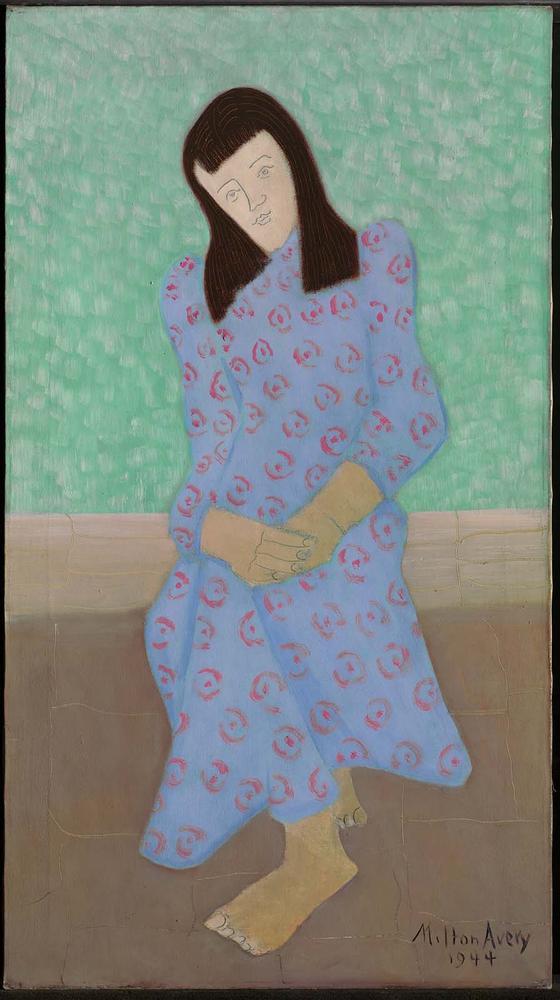Advanced Search 

The Artist's Daughter in a Blue Gown
Milton Clark Avery (American, 1885–1965)
1944
Medium/Technique
Oil and graphite on canvas
Dimensions
91.44 x 50.8 cm (36 x 20 in.)
Credit Line
Emily L. Ainsley Fund
Accession Number1970.498
NOT ON VIEW
CollectionsAmericas
ClassificationsPaintings
Milton Avery painted so many pictures of his daughter that in 1947 he was able to organize an entire exhibition entitled "My Daughter, March" around images of her. Fascinated with March from birth, Avery delighted in recording her growth and development and at the same time experimenting with his own style of painting. In "The Artist's Daughter in a Blue Gown," he used simplified and flattened forms, contrasting patterns, and soft colors to create a lyrical and serene image of twelve-year-old March. He employed the butt end of his brush to scratch lines in the thin wet paint that define the tiles on the floor and March's hair, and drew her facial features, fingers, and toes with graphite (pencil). Fond of the image, Avery gave it to an artist friend.
Primarily self-taught, Avery was influenced by the paintings of Henri Matisse and Pablo Picasso. He developed his semiabstract style, incorporating flat planes of delicate color and finely balanced shapes, during the 1920s, when realism rather than modernist abstraction was ascendant in America. Because his style was out of fashion, Avery sold few paintings for two decades. His simplified forms and luminous color did, however, influence a group of younger Abstract Expressionist artists, including Mark Rothko and Adolf Gottleib. Eventually, he won recognition for the subtle colors and elegant patterns of his landscapes and figure studies.
This text was adapted from Carol Troyen and Janet Comey, "Children in American Art" (Nagoya/Boston Museum of Fine Arts, 2007, in Japanese).
Primarily self-taught, Avery was influenced by the paintings of Henri Matisse and Pablo Picasso. He developed his semiabstract style, incorporating flat planes of delicate color and finely balanced shapes, during the 1920s, when realism rather than modernist abstraction was ascendant in America. Because his style was out of fashion, Avery sold few paintings for two decades. His simplified forms and luminous color did, however, influence a group of younger Abstract Expressionist artists, including Mark Rothko and Adolf Gottleib. Eventually, he won recognition for the subtle colors and elegant patterns of his landscapes and figure studies.
This text was adapted from Carol Troyen and Janet Comey, "Children in American Art" (Nagoya/Boston Museum of Fine Arts, 2007, in Japanese).
InscriptionsLower right: Milton Avery/1944; Reverse: "Artist's Daughter in Blue Gown" by Milton Avery
ProvenanceThe artist; Mr. and Mrs. John Laurent, York, Maine; sold by Mr. and Mrs. Laurent to the MFA, November 1970.
Copyright© Milton Avery Trust / Artists Rights Society (ARS), New York.
